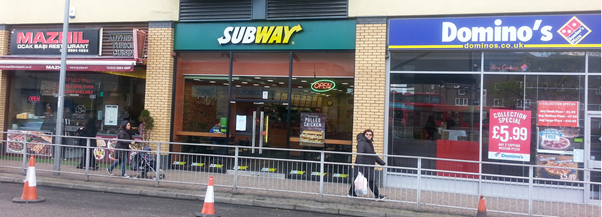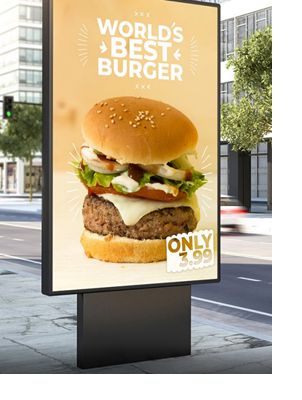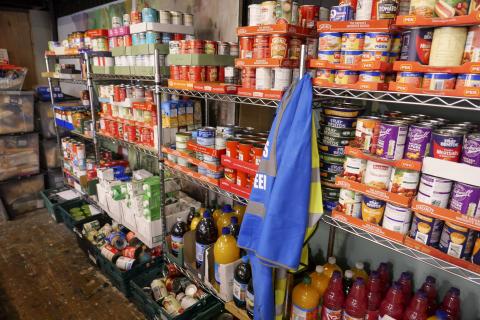23 February 2022
Levelling up on Local Food Environments

by Shona Goudie
In the Serving Up Levelling Up blog series we'll be exploring how food and diets will need to be an essential part of the Government’s levelling up agenda if it is going to achieve its ambition to level up the UK
In the Levelling Up White Paper published earlier this month, Government set out 12 missions to achieve their ambition to level up the country and ensure equal opportunity across the UK. Food and diets will need to be an essential part of the Government’s levelling up agenda if it is going to achieve these missions. In this blog, we explore the role of food in the mission to boost local pride and how transforming local food environments should be part of revitalising and regenerating our high streets.
“By 2030, pride in place, such as people’s satisfaction with their town centre and engagement in local culture and community, will have risen in every area of the UK, with the gap between top performing and other areas closing.”
Levelling Up White Paper
Food environments (our surroundings that influence how we engage with the food system) are not supporting us to make healthy dietary choices, particularly in more deprived areas of the UK. The Food Foundation’s Broken Plate demonstrates how difficult it is to eat healthily when there are so many factors such as affordability, availability, convenience and marketing, making it easier to make the unhealthy choice even when we know this is bad for our health and the planet.
Our local town and city centres form part of this food environment: our high streets are filled with fast food takeaways and we are bombarded by outdoor advertising of unhealthy foods further influencing us to make unhealthy choices.
Advertising

Outdoor advertising surrounds us in our towns and cities - on public transport, on bus stops, on train stations, and on billboards. 98% of the UK population are exposed to outdoor advertising every day1. A study in the North East of England found that approximately 1 in 2 adverts on bus shelters were for food and non-alcoholic drinks and of these over a third were for less healthy products2. We know that advertising spend on food and non-alcoholic drink is disproportionately spent on unhealthy products3, and research shows that obesity rates are likely to be higher in areas with more outdoor advertising of unhealthy foods4.
Advertising of food can be used in a positive way to boost health. The Veg Power campaign has demonstrated that with their Eat Them To Defeat Them campaign finding that advertising vegetables helped to increase consumption5.
Current commitments to restrict advertising of food and drink which is high in fat, salt and/or sugar (HFSS) are focused on TV and online, but there is a significant gap by not banning this type of advertising in outdoor spaces.
Last week, the London School of Hygiene and Tropical Medicine published a study showing that polices to restrict advertising of unhealthy food are effective at helping to improve diets – they found that the ban on advertising HFSS food and drink on the Transport for London network was associated with households in London buying 1000 fewer calories of HFSS in their weekly shop and decreased calories from chocolate and sweets by 20%6.
The Grocer revealed last week that as many as 70 local authorities are planning to introduce similar policies following the success in London7. This shows that there is appetite for local government to make these changes to our local food environments.
Furthermore, people don’t want to be bombarded by advertising of unhealthy foods – citizens said this clearly during the Public Dialogues for the National Food Strategy8 and findings from research across the board shows the majority of people support bans on advertising of these products9,10,11.
“What advertisers will do as well is blame individuals for the choices we are making as do the government in a lot of their campaigns. It’s like this is your choice, you’re making the bad choice and you’re choosing these things, but actually that’s not what happens, it’s not the individuals, it’s the subliminal messaging and it’s the food environment.”
Food Foundation Veg Advocate
Fast Food Takeaways

It’s not uncommon in the UK to see streets with wall-to-wall takeaways. One in four places to buy food are fast food outlets making these unhealthy foods the most convenient option for lots of people12. The density of fast-food outlets is much higher in the North than the South, and varies widely across local authorities in England – in the Isles of Scilly 6% of food outlets are fast food outlets but in Blackburn with Darwen it’s as high as 39%13.
The Levelling Up White Paper reflects that “economic and social disparities are often reflected in places’ built environment” – this is the case with fast food takeaways. The density of fast-food outlets is greater in more deprived areas – almost as twice as high in the most deprived local authorities compared with the least deprived. Easier access to neighbourhood takeaway outlets has been shown to increase consumption of takeaways and is associated with higher weight14. Not only are takeaways damaging our health, they can create less pleasant neighbourhoods to be living in. Enforcing stricter regulations on fast food locations could simultaneously deliver benefits in tackling health disparities and increases people’s satisfaction with the areas they live in.
“I’m thinking of, the top of our street, there’s maybe 3 or 4 takeaways and a Sainsbury's, but when I was growing up on the same parade there was a bakery, a greengrocers and a fish mongers, they’ve just all gone now they’re just replaced with fried chicken and Indian, burger places”
Food Foundation Veg Advocate
There are currently policies which give potential for local planners to regulate takeaways but there are a number of barriers to implementing them. Some areas do regulate, but 80% of takeaway food outlet planning criteria are not health-focused15.
Last week, South Tyneside Council refused plans for new food takeaways saying this would clash with their policies to promote healthy lifestyles and tackle obesity16. This shows that it is possible for local areas to do more to regulate fast food takeaways and improve food environments.
Conclusion
Creating a healthier local food environment has potential to deliver on levelling up both on health and local pride. As part of the effort to empower local leadership, councils and local authorities need to be better supported and encouraged to use the powers available to them to transform their town centres and high streets to facilitate better diets and health.
References
3 https://foodfoundation.org.uk/publication/broken-plate-2021
4 https://www.sustainweb.org/publications/feb22-advertising-policy-toolkit/
6 https://journals.plos.org/plosmedicine/article?id=10.1371/journal.pmed.1003915
9 https://yougov.co.uk/topics/food/articles-reports/2021/06/07/advertising-ban-on-junk-food-poll
10 https://www.ipsos.com/en-uk/public-supports-government-intervention-diet-health-and-advertising
12 https://foodfoundation.org.uk/publication/broken-plate-2021
13 https://foodfoundation.org.uk/publication/broken-plate-2021







